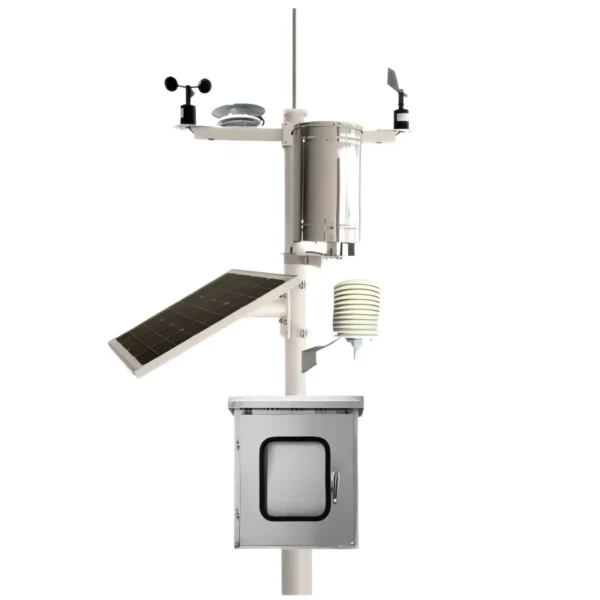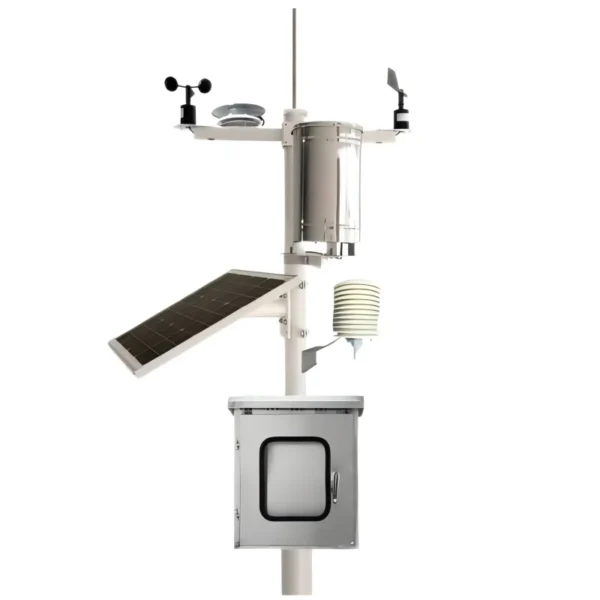Automatic Weather Station: Definition and Functionality

# Automatic Weather Station: Definition and Functionality
## What is an Automatic Weather Station?
An Automatic Weather Station (AWS) is a sophisticated system designed to collect and record meteorological data without the need for constant human intervention. These stations are equipped with various sensors that measure environmental parameters such as temperature, humidity, wind speed, wind direction, rainfall, and atmospheric pressure. The data collected by an AWS is typically transmitted to a central database or displayed on a local interface for real-time monitoring.
## Components of an Automatic Weather Station
An AWS consists of several key components that work together to provide accurate and reliable weather data:
– Sensors: These are the primary components that measure various weather parameters. Common sensors include thermometers for temperature, hygrometers for humidity, anemometers for wind speed, wind vanes for wind direction, rain gauges for precipitation, and barometers for atmospheric pressure.
– Data Logger: This device records the data collected by the sensors. It can store data internally or transmit it to a remote location.
– Power Supply: AWS systems are often powered by solar panels, batteries, or a combination of both to ensure continuous operation, especially in remote locations.
– Communication System: This component is responsible for transmitting the collected data to a central database or a local display. Communication methods can include radio, satellite, or cellular networks.
– Mounting Structure: The sensors and other components are mounted on a sturdy structure to ensure stability and accurate measurements.
## Functionality of an Automatic Weather Station
The primary function of an Automatic Weather Station is to provide accurate and timely weather data. Here are some of the key functionalities:
– Data Collection: AWS systems continuously collect data on various weather parameters. This data is essential for weather forecasting, climate research, and environmental monitoring.
– Data Transmission: The collected data is transmitted to a central database or a local interface. This allows meteorologists and researchers to access the data in real-time or for later analysis.
– Data Analysis: The data collected by an AWS can be analyzed to identify weather patterns, predict future weather conditions, and study climate change.
– Alerts and Warnings: AWS systems can be programmed to issue alerts and warnings based on specific weather conditions. For example, if wind speeds exceed a certain threshold, an alert can be sent to relevant authorities or the public.
– Integration with Other Systems: AWS data can be integrated with other meteorological systems and models to improve the accuracy of weather forecasts and climate studies.
## Applications of Automatic Weather Stations
Automatic Weather Stations are used in a variety of applications, including:
– Agriculture: Farmers use AWS data to make informed decisions about planting, irrigation, and harvesting. Accurate weather data helps optimize crop yields and reduce the risk of crop damage.
– Aviation: Airports use AWS systems to monitor weather conditions and ensure the safety of aircraft operations. Real-time weather data is crucial for flight planning and air traffic control.
– Disaster Management: AWS systems play a critical role in disaster management by providing early warnings for severe weather events such as hurricanes, tornadoes, and floods.
– Environmental Monitoring: Researchers use AWS data to study environmental changes, monitor air quality, and assess the impact of human activities on the environment.
– Renewable Energy: AWS systems are used to monitor weather conditions at renewable energy sites, such as wind farms and solar power plants. This data helps optimize energy production and improve the efficiency of renewable energy systems.
## Conclusion
Automatic Weather Stations are invaluable tools for collecting and analyzing weather data. Their ability to operate autonomously and provide real-time data makes them essential for a wide range of applications, from agriculture and aviation to disaster management and environmental monitoring. As technology continues to advance, AWS systems will become even more accurate and reliable, further enhancing their role in weather forecasting and climate research.
Keyword: what is automatic weather station
